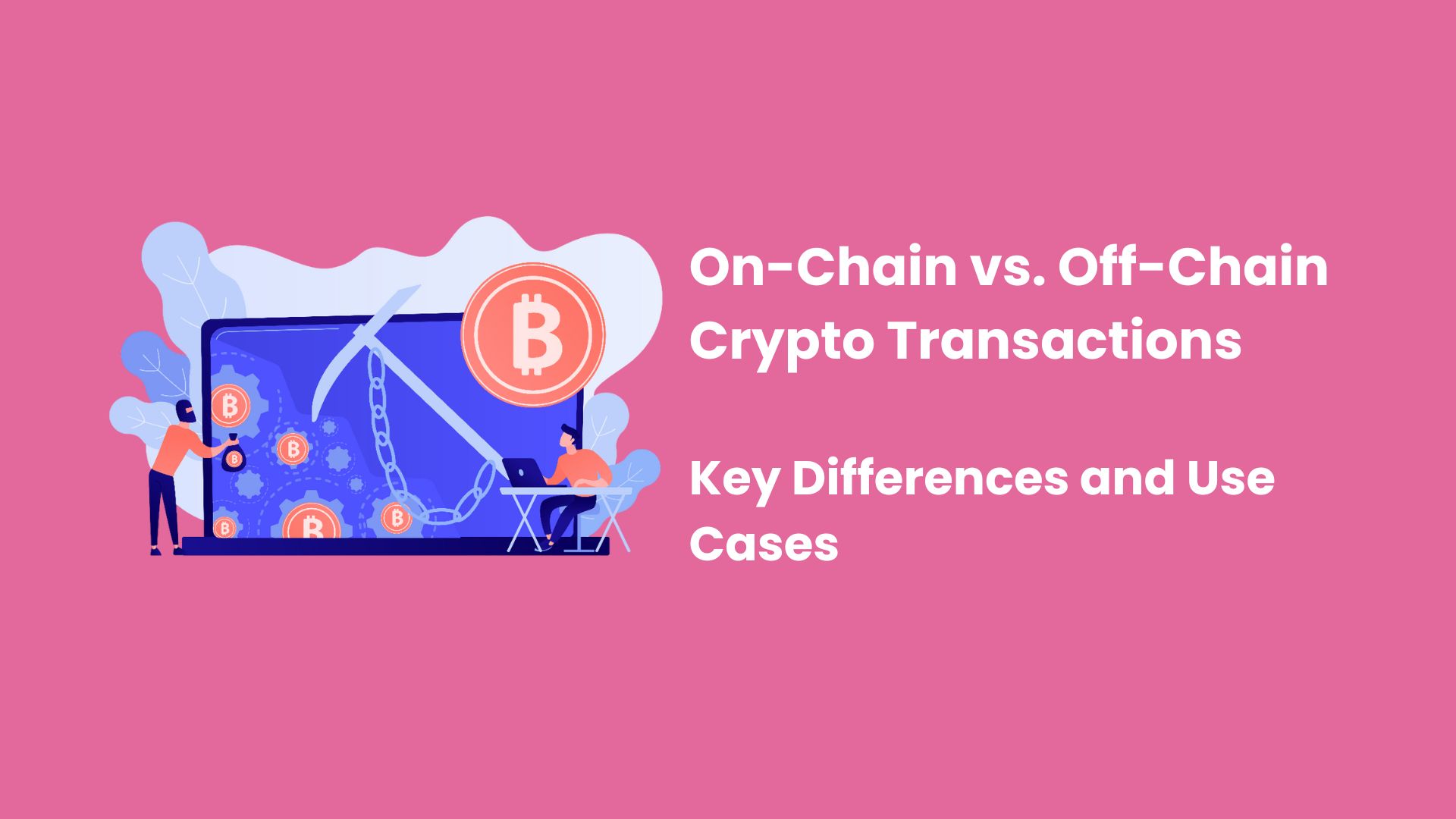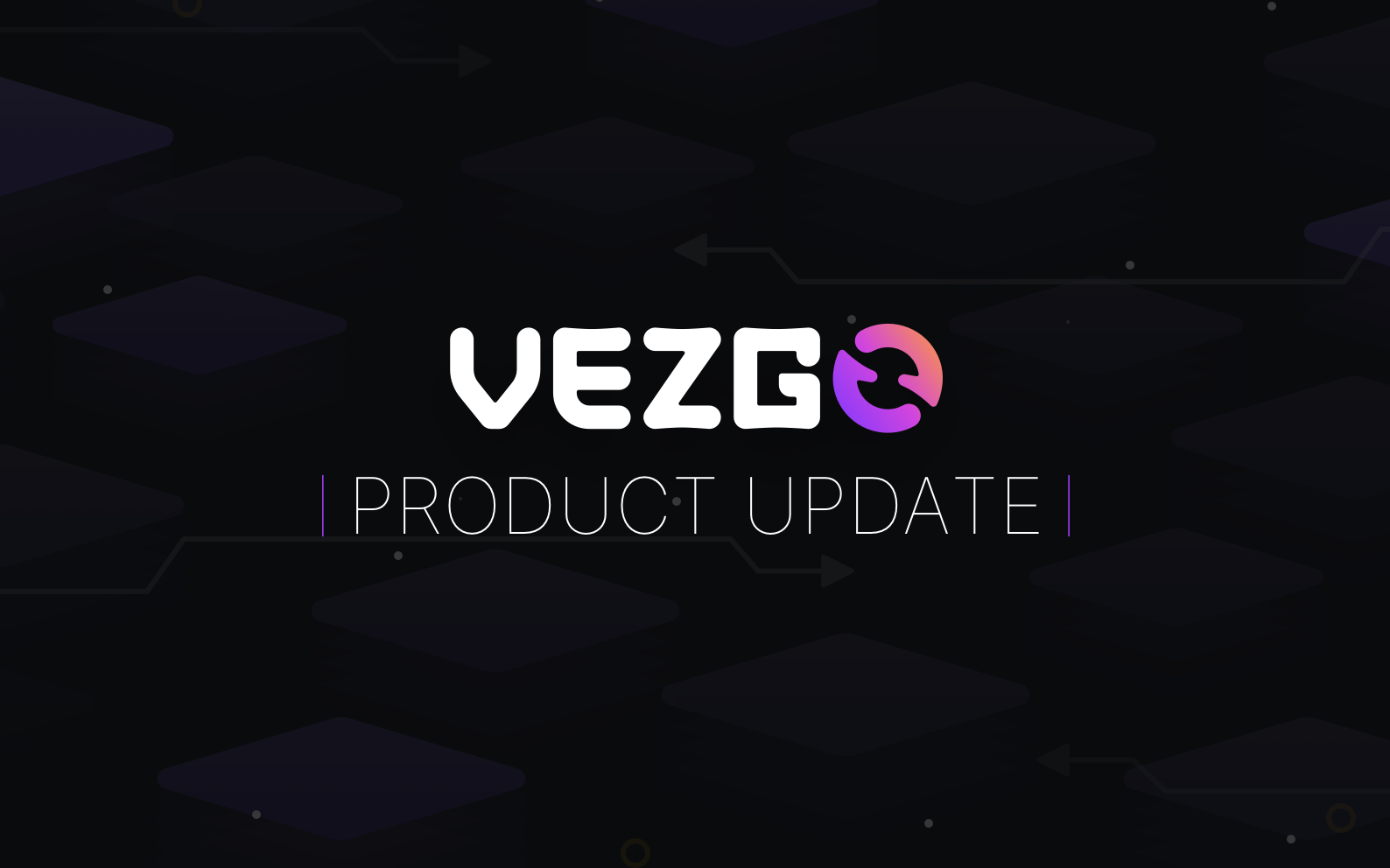
Cryptocurrency transactions don’t all work the same way. Some are slow, expensive, and permanently recorded on the blockchain, while others happen instantly and privately without touching the blockchain. On-chain and off-chain transactions shape how digital assets move, impacting speed, security, and cost. If you’ve ever wondered why some Bitcoin payments take minutes while others settle in seconds, the difference lies in how the transaction is processed.
This piece explores the key differences between on-chain and off-chain transactions, breaking down their mechanics, benefits, and trade-offs. You’ll discover when to use each method and how they impact real-world crypto payments.
What are On-Chain Transactions?
An on-chain transaction occurs directly on the blockchain and is permanently recorded in its distributed ledger. Every transaction follows a strict process that network participants must validate before being finalized. This approach ensures security, transparency, and immutability, making it a preferred method for transferring large sums, securing long-term holdings, or finalizing important transactions. However, on-chain transactions often have drawbacks such as high fees, slow processing times, and network congestion, as will be discussed later.
How It Works
When you initiate an on-chain transaction, your wallet generates a request that includes details such as the recipient’s address, the amount being sent, and a transaction fee. This request is broadcasted to the blockchain network, where nodes verify that your wallet has sufficient funds and that the transaction adheres to protocol rules. Once validated, the transaction enters a mempool, a temporary waiting area where unconfirmed transactions reside before being picked up by miners or validators. The speed at which your transaction moves from the mempool to the blockchain depends on the network’s congestion and the fee you attached. Higher fees incentivize miners to prioritize a transaction, leading to faster confirmation times.
Miners or validators then group multiple transactions into a block and validate them based on the network’s consensus mechanism. In proof-of-work blockchains like Bitcoin, miners solve complex mathematical puzzles to secure the network and confirm transactions, which takes around 10 minutes per block. In proof-of-stake systems like Ethereum, validators are selected to verify transactions based on the amount of cryptocurrency they have staked. Once a transaction is successfully included in a block, it becomes part of the blockchain’s immutable ledger, ensuring that it cannot be reversed or altered.
For example, if you purchase a product using Bitcoin on-chain, your payment must go through this entire validation process before the merchant receives the funds. Depending on network congestion, the confirmation could take several minutes, making on-chain transactions less practical for everyday purchases.
What are the Pros and Cons of On-Chain Transactions?
On-chain transactions provide some benefits and limitations while carrying out your crypto transaction. Understanding the merits and demerits of on-chain transactions helps you decide when to use them and when to consider off-chain alternatives.
Pros of On-Chain Transactions
On-chain transactions offer high security because every transaction is validated by the network and permanently recorded on the blockchain. This makes them resistant to fraud, censorship, and manipulation. Since blockchain technology relies on decentralized consensus mechanisms, transactions cannot be altered once confirmed.
Another major advantage is transparency. Every transaction is publicly recorded, allowing users to verify transfers and account balances on the blockchain. This transparency is particularly valuable in financial applications, smart contracts, and decentralized exchanges, where trust and accountability are essential. Unlike traditional banking systems, where centralized institutions control transactions, on-chain transactions are accessible to anyone with an Internet connection.
On-chain transactions also eliminate the need for intermediaries. Since transactions are verified by the network rather than a third party, users maintain full control over their assets. This reduces the risk of third-party interference, fund freezes, or restrictions often imposed by centralized financial systems. By removing middlemen, on-chain transactions support the core principles of decentralization and financial sovereignty.
Cons of On-Chain Transactions
One of the biggest drawbacks of on-chain transactions is their slow processing times. Since the network must validate every transaction before being recorded on the blockchain, delays are common, especially during periods of high activity. Bitcoin transactions, for example, can take anywhere from a few minutes to over an hour to confirm, depending on network congestion. This makes on-chain transactions less suitable for time-sensitive payments.
Transaction fees are another significant limitation. Because on-chain transactions require network resources to validate and store data, users must pay fees that vary based on network demand. During peak usage, fees can rise dramatically, making small transactions costly. High fees can discourage users from making frequent on-chain transactions, especially when cheaper alternatives like off-chain payments exist.
On-chain transactions also lack privacy. Since all transactions are recorded on a public ledger, anyone can view transaction details, including wallet addresses and transferred amounts. While blockchain addresses do not directly reveal user identities, advanced tracking tools can analyze transaction patterns and potentially link addresses to individuals. This level of transparency can be a disadvantage to users who prioritize financial privacy.
What are Off-Chain Transactions?
An off-chain transaction occurs outside the blockchain and does not require direct validation from network participants. Unlike on-chain transactions, which are recorded permanently on the blockchain, off-chain transactions occur through private agreements, payment channels, or third-party services. This approach allows users to transfer funds instantly and with lower costs since miners or validators do not need to verify transactions. Off-chain transactions are commonly used in cryptocurrency exchanges, payment networks, and layer-two scaling solutions to improve transaction speed and reduce congestion on the main blockchain. Off-chain transactions can offer greater privacy and flexibility because they do not immediately affect the blockchain ledger. However, they rely on trust mechanisms or intermediaries to ensure that both parties complete their agreement fairly.
How It Works
When you make an off-chain transaction, the transfer occurs outside the blockchain without broadcasting it to the entire network. Instead of waiting for validators or miners to confirm the transaction, both parties agree on the transfer and record it privately. Payment channels, custodial services, or multi-signature agreements often facilitate this process. Since the transaction does not compete for block space, it bypasses network congestion and high fees. This makes off-chain transactions an efficient option for frequent payments and microtransactions.
For example, if you and a friend frequently exchange crypto, opening a payment channel allows you to transact multiple times without recording each transfer on the blockchain. The payment channel operates by locking a certain amount of the crypto in a shared account. Each transaction updates the account balance privately, ensuring that only the final settlement is recorded on-chain when the channel is closed. This reduces blockchain bloat and significantly lowers transaction costs.
Off-chain transactions are also widely used on centralized exchanges. When you trade cryptocurrency on an exchange like Binance or Coinbase, your transactions occur off-chain within the exchange’s internal ledger. Instead of processing each trade on the blockchain, the exchange updates account balances in its system and only records withdrawals and deposits on-chain. This allows users to trade assets instantly without waiting for blockchain confirmations, improving liquidity and efficiency.
What are the Pros and Cons of Off-Chain Transactions?
Like On-Chain transactions, Off-chain transactions offer some benefits while engaging in crypto transactions. However, they also come with trade-offs that could deter them from being the right choice in certain situations.
Pros of Off-Chain Transactions
One of the biggest advantages of off-chain transactions is speed. Since they do not require blockchain validation, transfers are almost instant. This makes them ideal for use cases like trading on centralized exchanges, where quick execution is essential, or payment channels, where multiple transactions can be settled in seconds. Unlike on-chain transactions, which can take minutes or hours during peak network congestion, off-chain transactions offer near-instant settlement.
Lower transaction costs make off-chain transactions highly efficient. Users can transfer funds with little to no cost without the need for miner or validator fees. This is especially beneficial for microtransactions, where blockchain fees could otherwise exceed the transaction amount. Payment channels and off-chain solutions help make cryptocurrency more practical for everyday spending and frequent transactions.
Off-chain transactions also provide greater privacy. Transaction details remain hidden from external observers since they are not recorded on a public blockchain. Users can transfer funds without exposing wallet addresses or transaction histories, reducing the risk of financial tracking. This level of privacy is particularly valuable for businesses, traders, and individuals who prefer to keep their financial activity confidential.
Cons of Off-Chain Transactions
A major drawback of off-chain transactions is the need for trust. Unlike on-chain transactions, which rely on decentralized validation, off-chain transfers often depend on intermediaries or pre-established agreements. Users must trust that an exchange, payment channel, or counterparty will honor the transaction without manipulation or fraud. If an intermediary fails, funds could be lost or frozen.
Reduced decentralization is another limitation. Since off-chain transactions do not go through blockchain consensus, they rely on centralized entities or trusted systems to function. While this improves efficiency, it also weakens the core principle of decentralization that cryptocurrencies were built on. Centralized exchanges, for example, control users’ funds within their platforms, creating risks if the exchange faces security issues or mismanagement.
Security concerns also arise with off-chain transactions. While avoiding blockchain congestion and high fees, they introduce potential vulnerabilities. If a payment channel is not properly secured or an exchange experiences a breach, users may lose access to their funds. Additionally, because these transactions are not publicly recorded, disputes over transfers may be harder to resolve than on-chain transactions, which provide an immutable record.
Conclusion
On-chain and off-chain transactions are important in the cryptocurrency ecosystem, and choosing the right method depends on your needs. On-chain transactions are ideal when security, decentralization, and transparency are priorities, making them suitable for high-value transfers, long-term holdings, and smart contract interactions. However, they can be slow and expensive, especially during periods of high network activity. On the other hand, off-chain transactions offer speed, lower costs, and greater privacy, making them the better choice for frequent trading, microtransactions, and real-world payments. While off-chain transactions sacrifice some decentralization and require trust in intermediaries, they provide the efficiency needed for seamless crypto transactions.
Vezgo: The Crypto API
Vezgo provides a comprehensive solution for aggregating your users’ crypto wallet transactions across multiple exchanges, blockchains, and wallets. Its transaction categorization feature ensures that incoming data is properly labeled, making it easier to differentiate deposits, withdrawals, staking rewards, and trading activity. Vezgo keeps transaction records up-to-date with flexible data refresh, allowing real-time insights into users’ portfolio movements. Vezgo helps businesses and developers gain deeper financial visibility by enabling transaction analytics and improving reporting, tax calculations, and compliance tracking.
Vezgo Connect Flow streamlines how users link their crypto accounts to your application. Instead of manually entering API keys or wallet addresses, users can authenticate their exchange and wallet connections with just a few clicks. This seamless process reduces friction, enhances user experience, and eliminates the need for complex integrations. With support for a wide range of crypto platforms, Vezgo Connect ensures a hassle-free connection to centralized and decentralized financial services. Vezgo’s unified API makes onboarding effortless for building a portfolio tracker, a tax reporting tool, or a FinTech application while maintaining high security.
Security is at the core of Vezgo’s infrastructure, offering bank-level encryption to safeguard user data. Every transaction and wallet connection is encrypted using advanced security protocols, ensuring that sensitive information is always protected. Vezgo’s secure cloud infrastructure further enhances data protection by adhering to industry-leading security standards, preventing unauthorized access and potential threats. Vezgo provides a trusted environment for developers and businesses looking to integrate crypto data without compromising user privacy or regulatory compliance.





Leave a Reply